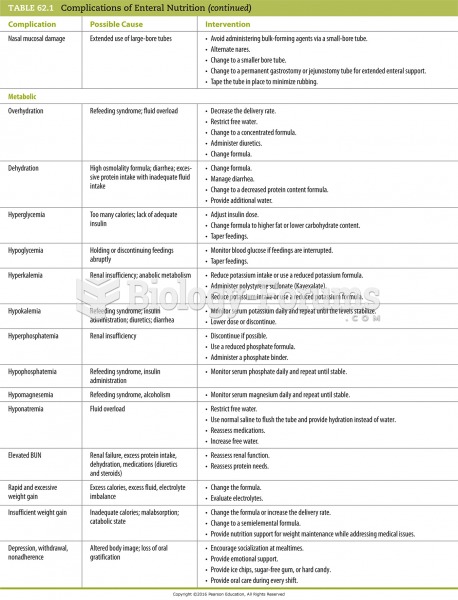|
|
|
Less than one of every three adults with high LDL cholesterol has the condition under control. Only 48.1% with the condition are being treated for it.
Asthma attacks and symptoms usually get started by specific triggers (such as viruses, allergies, gases, and air particles). You should talk to your doctor about these triggers and find ways to avoid or get rid of them.
In Eastern Europe and Russia, interferon is administered intranasally in varied doses for the common cold and influenza. It is claimed that this treatment can lower the risk of infection by as much as 60–70%.
Patients who cannot swallow may receive nutrition via a parenteral route—usually, a catheter is inserted through the chest into a large vein going into the heart.
Illicit drug use costs the United States approximately $181 billion every year.
 The experimental approach used by Masui and Markert to identify cyclin and cyclin-dependent kinase (
The experimental approach used by Masui and Markert to identify cyclin and cyclin-dependent kinase (
 Carnivorous plants, such as this pitcher plant (Sarracenia purpurea) are commonly found in bog habit
Carnivorous plants, such as this pitcher plant (Sarracenia purpurea) are commonly found in bog habit





